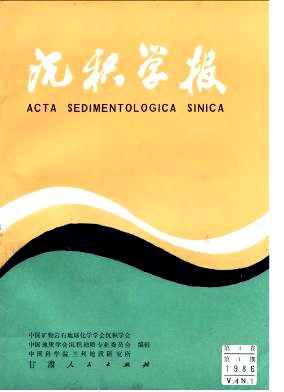A STUDY ON SO_4~- DIFFUSION FLUX IN SHORE OF THE EAST CHINA SEA CONTINENTAL SHELF
- Received Date: 1984-01-17
- Publish Date: 1986-03-10
Abstract: The SO42-concentration in interstitial water and overlying water is analysed and examined with the gravity method and the volumetric method respectively. The results of both methods are consistent with each other. The gradient method is mainly used for measuring diffusion flux of SO42-.This method is based on Fick's first law, and proposed by referring to the use of SO42- gradient flux in the studies made by Goldhaber, et al.(1974),Berner(1976) and Goldhaber, etal.(1977).The equation is F =φDs (dc/dz) z=0, and may be simplified as F=-φDs△c/△z to measure.SO42-flux similarly. According to the data of SO42- gradient flux,some problems have been disccussed in the following aspects: 1.The SO42-concentration in the overlying water is lower than that in the surficial interstitial water significantly under the influence of the Changjiang River dilute water in the nearshore studying area in summer( June-August ).The seasonal negative SO42-flux diffusing up to the overlying water is produced thereby.In the fall, the SO42- concentration in the overlying water increases to or even beyond its concentration in the surficial interstitial water without the fresh water influence of the Changjiang River in the nearshore area mentioned above. In addition, the SO42-concentration in the surficial interstitial water is slightly lower tha that in summer with the Eh value decreasing and the density of SO42-reduction bacteria increasing in the autumn sediment. Therefore,the SO42-flux acrossing sediment-water interface is mostly transforming into positive flux which diffuses down to sediment in the fall in the nearshore studying area.2.The regional distribution characteristics of negative SO42-flux acrossing sediment-water interface is significant in the nearshore studying area in summer,the higher SO42- fluxes occur in the triangular region which is located in the southwest of the nearshore studying area(Fig.4),such as stations G8140, G8003,G8005,G8025,etc.and lower SO42- fluxes occur in the northeast of the nearshore studying area, such as stations G8009, G8001, G8011, etc.,These characteristics seem to be related to sediment types because the former are generally muddy stations, and the latter are generally sandy stations.So there is a negative correlation between SO42-flux and sandy content in sediments(Fig. 5 b).In addition,the negativeSO42- fluxes crossing sediment-water interface are significantly relative to disturbance of benthonic faunas because the higher density of benthonic faunas is in the sandy station in which the SO42-flux is lower.Therefore,the negative correlation between SO42-flux and the density of benthonic faunas is revealed (Fig. 5 a).The reason of this relationship is that the lower density of benthic faunas occurs in muddy stations and the higher density occur in sandy stations(Fig. 4 ),in which more benthonic species exist and benthonic disturbance is more powerful, surely resulting in more mixing between the overlying water with lower SO42-concentration and surficial interstitial water with higher SO42-concentration through benthonic irrigation.Thus the gradient of SO42-concentration and SO42-flux measured by the gradient method are reduced near the interface thereby. The results are as follows: 1.The SO42-fluxes crossing sediment-water interface are seasonal negative fluxes diffusing from sediments up to overlying water column in the nearshore area of the East China Sea continental shelf in summer. The main reason is that the Changjiang River fresh water seasonally dilutes SO42-in overlying sea water of the nearshore sea bottom. 2 .There is an obvious correlation among SO42-flux crossing sediment-water interface, region and sediment types.The main reason of this correlation is that the bentonic disturbance influenced by dilute fresh water restricts the SO42-concentration in overlying water and surficial interstitial water.
| Citation: | Wang Chenghou. A STUDY ON SO_4~- DIFFUSION FLUX IN SHORE OF THE EAST CHINA SEA CONTINENTAL SHELF[J]. Acta Sedimentologica Sinica, 1986, 4(1): 110-116. |






 DownLoad:
DownLoad: